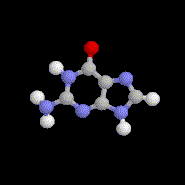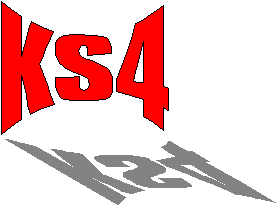|

|
Department Physics
Chemistry Biology
Curriculum
School Research
 
Back
to SJHS kS4 Science
CHEMISTRY .. National
curriculum
|
1.Classifying materials
atomic structure
|

homepage
Dept
curriculum
|
|
a
that solids, liquids and gases are all composed of particles;
b
that atoms consist of nuclei and electrons;
|
|
c
the charges and relative masses of protons, neutrons and electrons;
|
|
d
about mass number, atomic number and isotopes;
|
|
e
about a model of the way electrons are arranged in atoms;
|
|
f
that the reactions of elements depend upon the arrangement of
electrons in their atoms;
|
bonding
|
g
that new substances are formed when atoms combine;
|
|
h
that chemical bonding can be explained in terms of the transfer or
sharing of electrons;
|
|
i
how ions are formed when atoms gain or lose electrons;
|
|
j
that ionic lattices are held together by the attraction between
oppositely charged ions;
|
|
k
that covalent bonds are formed when atoms share electrons;
|
|
l
that substances with covalent bonds may form simple molecular
structures or giant structures;
|
|
m
the physical properties of some substances with giant structures
and some with simple molecular structures.
|
|
2.
Changing materials
|
|
useful products from oil
|
a
how oil deposits are formed;
|
|
b
that crude oil is a mixture of substances, most of which are
hydrocarbons, which can be separated by fractional distillation;
|
|
c
the use as fuels of some of the products from crude oil
distillation;
|
|
d
the products of burning hydrocarbons;
|
|
e
that there are different groups of hydrocarbons;
|
|
f
that alkanes are saturated hydrocarbons, and alkenes are
unsaturated hydrocarbons containing one double covalent bond
between carbon atoms;
|
|
g
that hydrocarbon molecules can be cracked to form smaller
molecules, including alkenes;
|
|
h
that addition polymers can be made from alkenes formed during
cracking;
|
|
i
some uses of addition polymers;
|
useful products from metal ores and rocks
|
j
that metal ores are found in the Earth;
|
|
k
that the way in which a particular metal is extracted from its
ores is related to its reactivity;
|
|
l
an example of how a reactive metal can be extracted by
electrolysis;
|
|
m
an example of how a less reactive metal can be extracted by
reduction with carbon or carbon monoxide;
|
|
n
an example of how a metal can be purified by electrolysis;
|
|
o
that a variety of useful substances can be made from rocks and
minerals;
|
useful products from air
|
p
how nitrogen can be converted to ammonia in industry;
|
|
q
how nitrogenous fertilisers are manufactured, and their effects on
plant growth and the environment;
|
representing reactions
|
r
to represent chemical reactions by word equations;
|
|
s
to represent reactions, including electrolytic reactions, by
balanced equations using chemical symbols;
|
quantitative chemistry
|
t
to use chemical equations to predict reacting quantities;
|
|
u
to determine the formulae of simple compounds from reacting masses;
|
changes to the atmosphere
|
v
how the atmosphere and oceans evolved to their present composition;
|
|
w
how the carbon cycle helps to maintain atmospheric composition;
|
geological changes
|
x
how igneous rocks are formed by the cooling of magma, sedimentary
rocks by the deposition and consolidation of sediments, and
metamorphic rocks by the action of heat and pressure on existing
rocks;
|
|
y
how the sequence of, and evidence for, these processes is obtained
from the rock record;
|
|
z
how plate tectonic processes are involved in the formation,
deformation and recycling of rocks.
|
|
3.
Patterns of behaviour
|
|
the periodic table
|
a
that the periodic table shows all elements, arranged in order of
ascending atomic number;
|
|
b
the connection between the arrangement of outer electrons and the
position of an element in the periodic table;
|
|
c
that elements in the same group of the periodic table have similar
properties;
|
|
d
that there is a gradual change in the properties of the elements
from the top to the bottom of a group;
|
|
e
the properties and uses of the noble gases;
|
|
f
the properties and reactions of the alkali metals;
|
|
g
the properties, reactions and uses of simple compounds of the
alkali metals;
|
|
h
the properties, reactions and uses of the halogens;
|
|
i
the properties, reactions and uses of simple compounds of the
halogens;
|
|
j
similarities between transition metals and characteristic
properties of their compounds;
|
|
k
some uses of transition metals;
|
rates of reactions
|
l
that there is great variation in the rates at which different
reactions take place;
|
|
m
how the rates of reactions can be altered by varying temperature
or concentration, or by changing the surface area of a solid
reactant, or by adding a catalyst;
|
|
n
that reactions can occur when particles collide;
|
|
o
that the rates of many reactions can be increased by increasing
the frequency or energy of collisions between particles;
|
reactions involving enzymes
|
p
how the rates of enzyme-catalysed reactions vary with temperature;
|
|
q
the use of enzymes in the baking, brewing and dairy industries;
|
reversible reactions
|
r
that some reactions are reversible;
|
|
s
how the yield of products from reversible reactions depends on the
conditions;
|
|
t
that some manufacturing processes are based on reversible
reactions;
|
energy transfer in reactions

|
u
that changes of temperature often accompany reactions;
|
|
v
that reactions can be exothermic or endothermic;
|
|
w
that making and breaking chemical bonds in chemical reactions
involves energy transfers.
|